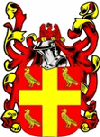wpurdom
Posts: 476
Joined: 10/27/2000
From: Decatur, GA, USA
Status: offline

|
quote:
quote:
quote:
4. As for whether they were right, who knows. It's sorta like the Germans had gone on the defensive, except for limited punishing counterattacks after the winter of 1941-42. (Let's say they smash the Kharkov offensive and stop). We would be in a poor position to judge whether they were right or wrong.
5. Some specifics that are wrong IMHO on the China front, but don't address many fundamental issues:
a. Allies being able to use the Red Army without a Japanese attack on it.
b. Offensive use of artillery to wear down Chinese forces outside of fixed defenses, like cities. (See next for distinction between light contact and hold fast).
c. Lack of Chinese option to break contact at low cost in the countryside and retreat - they should have a hold fast and light contact option on defend. Perhaps one could have special rules for combat with units in reserve, with putting all your forces in reserve being a sensible light contact option, so that the artilley can't get them and the caualties before retreat being minimized.
You can already place units in reserve and they are unaffected by the artillery...but you run the risk of being retreated out of the hex.
But do you take light casualties and limited morale drops from the resulting attack and the armor follow-up? I get the impression not, but don't really know. If the casualties are light under those circumstances, my apologies.
To judge what the war should be like in 1942, we need to look at the repulse of the Chinese offensive towards Canton and the counter-repulse of the Japanese counter-attack towards Changsha. I have no idea of how accurate the Wikipedia account is, but its hard to see something like this happening in AE
quote:
The third Battle of Changsha (December 24, 1941 – January 15, 1942) was the first major offensive in China by Imperial Japanese forces following the Japanese attack on the Western Allies.
The offensive was originally intended to prevent Chinese forces from reinforcing the British Commonwealth forces engaged in Hong Kong. With the capture of Hong Kong on December 25, however, it was decided to continue the offensive against Changsha in order to maximize the blow against the Chinese government.[1]
The offensive resulted in failure for the Japanese, as Chinese forces were able to lure them into a trap and encircle them. After suffering heavy casualties, Japanese forces called for a general retreat.[1]
Course of battle
On December 27, the Japanese 3rd, 6th, and 40th Divisions massed at Yueyang and advanced southward in three columns and crossed the Sinchiang River, and tried again to cross the Milo River to reach Changsha. However, the Chinese formed a deep pocket around the city and set up ambush parties around the Luoyang River. Halfway from Milo River and Changsha, the Japanese columns faced strong resistance from the Chinese and the eastern column was forced to take a detour further east, and the other two columns had to move closer together than originally planned. During the southward advance the Japanese encountered three Chinese army divisions that were pushed aside but not crushed; they retreated into the eastern mountains.
Changsha was evacuated except for the Chinese army and some 160 civilians who wished to stay to help the defense. On December 31, the Japanese troops stormed the southeastern defense of the city but failed to make any gains, and then made an attempt at the southern and then eastern part of the defense. Meanwhile, the northern part of the city was heavily bombarded. The Japanese eventually cut through the first line of defense, only to meet stubborn resistance from a second line of defense near the city center.
On January 1, the Chinese quickly counter-attacked and surprised the Japanese with heavy guns and inflicted heavy casualties on them. At about the same time, the previous army units that had retreated to the mountains swept down to attack the Japanese supply lines, with plenty of aid from local guerillas. The Japanese line collapsed on January 4. The three Japanese divisions were besieged and requested the help of the Japanese 9th Independent Brigade stationed in Yueyang. However, on January 9 they faced heavy fighting with the Chinese and were unable to relieve the besieged Japanese divisions. The Japanese then attempted to retreat through the Luoyang River, not knowing that an ambush party was already stationed in the region. Losing heavily at the river crossing, the Japanese eventually reached the Sinchiang River on January 15 to complete the retreat.
And the 1942 repulse followed a repulse in 1939 of a similar Japanese offensive.
|
 Printable Version
Printable Version




















 New Messages
New Messages No New Messages
No New Messages Hot Topic w/ New Messages
Hot Topic w/ New Messages Hot Topic w/o New Messages
Hot Topic w/o New Messages Locked w/ New Messages
Locked w/ New Messages Locked w/o New Messages
Locked w/o New Messages Post New Thread
Post New Thread